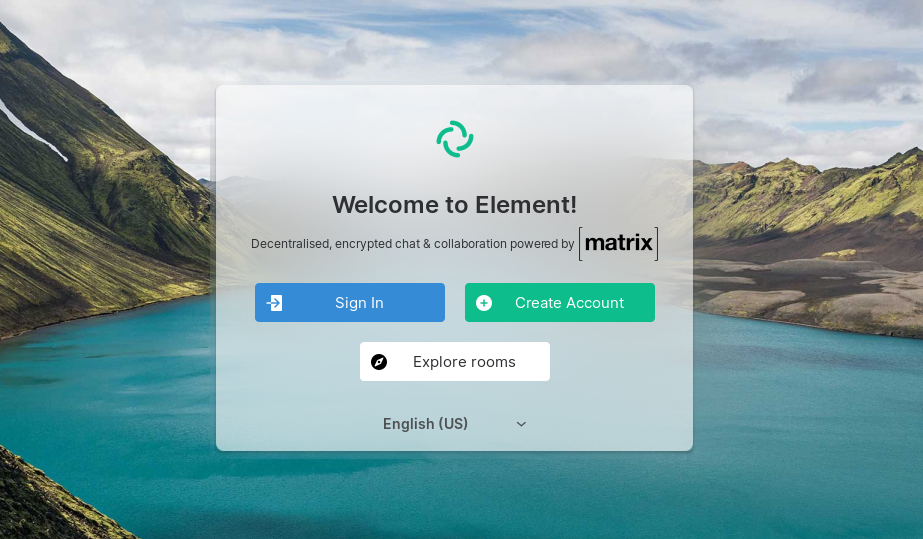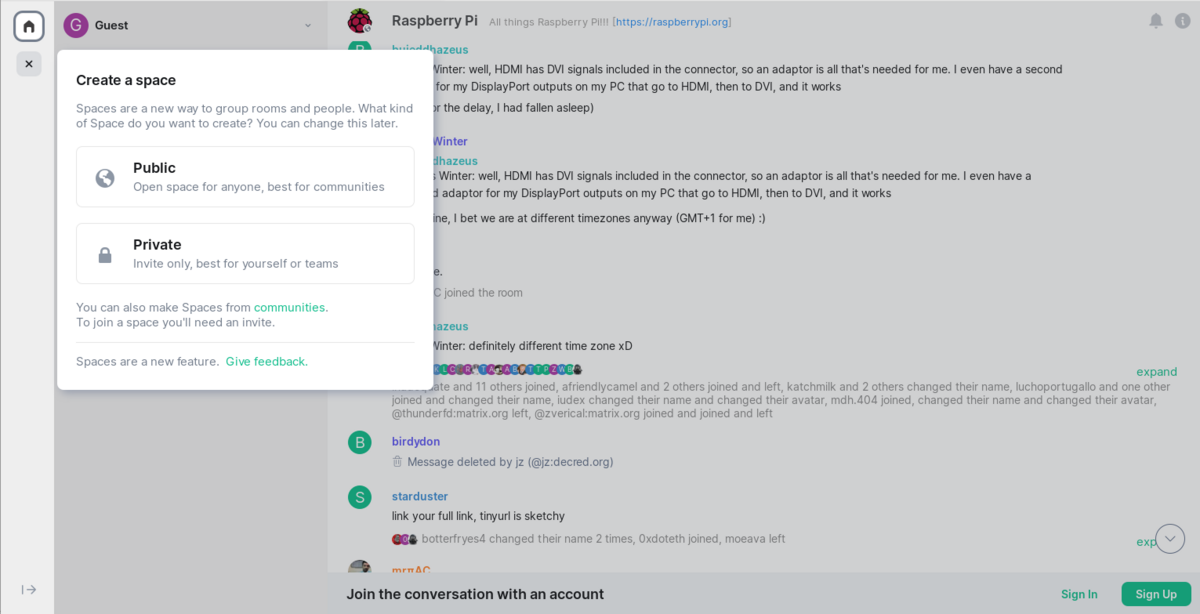Most of the platforms we use to communicate with each other online are tied to a single provider. But there's no technical reason for things to be this way. There are ways to chat online that offer a greater degree of privacy and freedom. Matrix is one of those ways.
What Is the Matrix Protocol?
Matrix is an open standard for real-time communication. More specifically, it enables you to communicate across different service providers. Think of how email works. If you have a ProtonMail email address, you're not limited to only talking to other ProtonMail users. Matrix offers that same freedom to online chat.
Matrix is one of many apps and services available to help you decentralize your online activity in this way. Together, they are known as the decentralized web (or the fediverse), and with them, you can take control of your digital life, today.
Matrix is not the first attempt at decentralizing chat.
XMPP, the Extensible Messaging and Presence Protocol, has already done this for instant messaging, where it served as the foundation for the likes of Google Talk, Facebook Messenger, and WhatsApp (all of which have become increasingly locked down). In addition, because XMPP is extensible, it has evolved to handle VoIP calls and video chat as well.
Matrix is a newer protocol designed to do all of this from the beginning, in the way we've grown accustomed to chatting across our devices. Yet it's not merely this capability that makes Matrix interesting, but how Matrix works.
How Does the Matrix Protocol Work?
The Matrix.org Foundation describes Matrix not as a protocol but as a decentralized conversation store. There is no single point of failure, such as a centralized server, in Matrix. When you communicate with someone, the data is shared among all the servers, with users participating in the conversation. If your server goes down, the conversation can still go on elsewhere until your server goes back up.
This is an effort to democratize communication. Each server has equal ownership over conversations and self-sovereignty over user data. These servers can be self-hosted at home or on a virtual private server or hosted by an organization, company, or community. This contrasts with all major commercial platforms, such as Discord, where the company owns the servers that everyone connects to and, as a result, all of the data. And if those servers go down, no one can communicate.
That's not where the contrasts stop. While someone on Twitter can't send a direct message to someone on Facebook, Matrix is interoperable by design. You can set up your Skype account, your Discord account, and your Slack account so that no matter where someone sends you a message, you see them in your Matrix client, and you can respond to any of them from one place. Matrix refers to this functionality as bridging.
How to Use Matrix
To start communicating using the Matrix protocol, you need a Matrix client. This is the app whose icon you will see in your app drawer, on your desktop, or your taskbar.
The Matrix.org Foundation recommends Element as the closest thing to being a flagship product. It showcases what Matrix can do and is cross-platform, so you can install it on whichever desktop or mobile operating system you wish.
Element is not alone, and there are many clients to choose from. Some are tailored to a specific operating system or, on Linux, a specific desktop environment, such as Fractal for GNOME and NeoChat for KDE Plasma. Others are made using a specific programming language or toolkit, such as FluffyChat made with Go and Mirage with Qt and Python. Each offers support for a varying degree of Matrix features.
You will also need to pick a server to host your account. You can go the self-hosting route if you want maximum control over your data and appreciate this freedom you don't have with the major commercial networks. But this comes with added complexity, and it's hardly required. If you just want to get up and running and start chatting as quickly as you would on any other platform, you can do that too. Perhaps the easiest place to start is app.element.io.
Your Matrix user ID appears in the following format.
@username:server.com
This is akin to an email address or your handle on Mastodon. On a centralized platform, everyone's on the same servers, so a username alone can suffice. On federated networks, you need to designate a username and the server where that username can be formed. Keep in mind that the term "server" is being used loosely here. Technically a service like Instagram has many servers handling unimaginable amounts of data, but to the end-user, these many servers appear as one.
What Features Does Matrix Have?
Matrix handles all kinds of communication, but communication is a very broad term. So, what can you actually do with Matrix?
- One-to-one instant messaging
- Chat rooms
- Video calls
- Audio calls
- File-sharing
- Other bridging functions unrelated to communication
The most direct comparison to a service similar to Matrix would be Discord. But in addition to Matrix being federated, there is also support for end-to-end encryption. So, in addition to greater ownership over your data, you also have a greater degree of privacy.
Again, there's also bridging. While the experience isn't seamless, Matrix is one of the best options these days for using a single client to manage all of your different messaging platforms. You can also bridge services that aren't used for communicating with others, such as receiving updates about new posts to an RSS feed.
You can even bridge Matrix with Twitter, though if you want a full-blown decentralized alternative, you may want to consider Mastodon instead.
Should You Use Matrix?
As with any communications platform, the question comes down to which platforms do your friends, family, or colleagues use? Are they willing to switch? Or are you content to connect with people who are already using Matrix? Again, there are already existing channels you can join to talk to strangers about shared interests.
Even if no one in your circle uses Matrix, you can still adopt Matrix on your own and bridge to whichever platform they use.
Matrix is an exciting technology and an example of how online communication could be done. If it's a vision you share, sign up and help make it happen.



